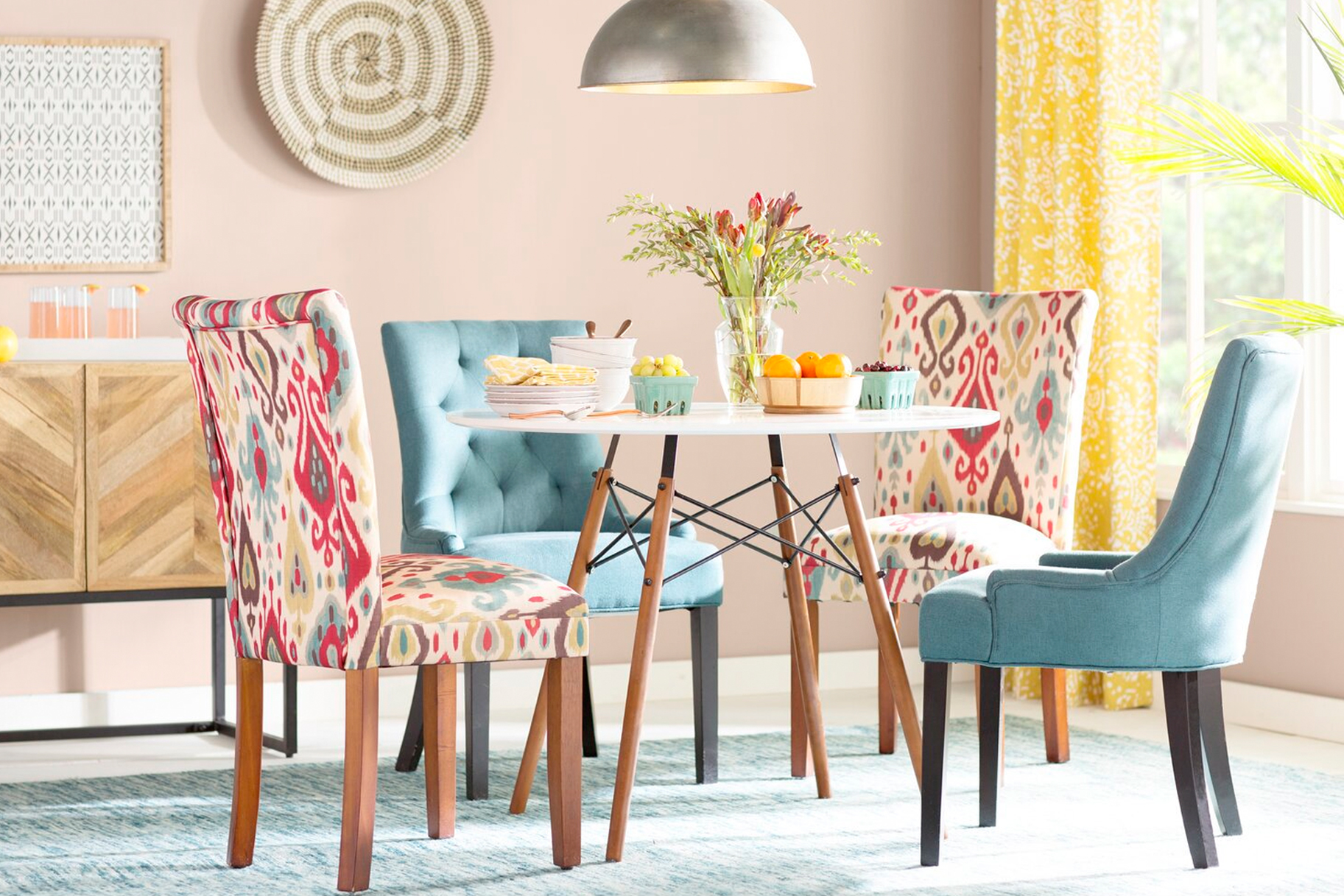Pendant lights play a crucial role in creating a warm and inviting atmosphere in dining rooms. They not only provide functional lighting but also serve as a design element that can enhance the overall aesthetic of the space. Pendant lights are versatile and come in a wide range of styles and designs, making it easy to find the perfect fit for any dining room decor.
The right pendant lights can transform a dining room into a cozy and intimate space, perfect for entertaining guests or enjoying family meals. They provide focused lighting that illuminates the dining table, creating a focal point and drawing attention to the delicious food and beautiful table settings. Pendant lights also add depth and dimension to the room, making it feel more spacious and inviting.
Choosing the Right Pendant Lights for Your Dining Room
When choosing pendant lights for your dining room, there are several factors to consider. First, think about the size and shape of your dining table. The pendant lights should be proportionate to the table, neither too small nor too large. A general rule of thumb is to choose a pendant light that is about one-third the width of the table.
Next, consider the height of your ceiling. Pendant lights should hang at an appropriate height to ensure they provide adequate lighting without obstructing views or causing glare. As a general guideline, pendant lights should hang about 30-36 inches above the tabletop.
Finally, think about the overall style and decor of your dining room. Pendant lights come in a variety of styles, from traditional to modern to industrial. Choose a style that complements the existing decor and enhances the overall aesthetic of the space. Consider the materials used in the pendant light design as well, such as glass, metal, or fabric, to ensure they coordinate with other elements in the room.
Types of Pendant Lights: A Guide to Styles and Designs
Pendant lights come in a wide range of styles and designs, allowing you to find the perfect fit for your dining room. Traditional pendant lights feature classic designs with intricate details and ornate finishes. These lights add a touch of elegance and sophistication to any dining room.
On the other end of the spectrum, modern pendant lights feature sleek and minimalist designs. They often incorporate clean lines, geometric shapes, and metallic finishes. Modern pendant lights are perfect for contemporary dining rooms or spaces with a minimalist aesthetic.
Industrial pendant lights have gained popularity in recent years, especially in urban or loft-style dining rooms. These lights often feature exposed bulbs, metal shades, and raw finishes. Industrial pendant lights add a touch of ruggedness and character to any space.
In addition to different styles, pendant lights also come in a variety of materials. Glass pendant lights are popular for their ability to diffuse light and create a soft, warm glow. Metal pendant lights are durable and versatile, available in a range of finishes such as brass, bronze, or chrome. Fabric pendant lights add texture and softness to a space, perfect for creating a cozy atmosphere.
How to Install Pendant Lights in Your Dining Room
Installing pendant lights in your dining room can be a relatively simple process if you follow the right steps. Here is a step-by-step guide to help you through the installation process:
1. Turn off the power: Before starting any electrical work, make sure to turn off the power to the area where you will be installing the pendant lights. This can be done by flipping the corresponding circuit breaker in your electrical panel.
2. Determine the location: Decide where you want to install the pendant lights and mark the spot on the ceiling. Use a stud finder to locate any ceiling joists that may affect the installation.
3. Install the mounting bracket: Attach the mounting bracket to the ceiling using screws or anchors, depending on your ceiling type. Make sure it is securely fastened.
4. Connect the wiring: Follow the manufacturer’s instructions to connect the wiring of the pendant lights. This typically involves connecting the black wire to the black wire, the white wire to the white wire, and the ground wire to the ground wire.
5. Attach the pendant lights: Once the wiring is connected, attach the pendant lights to the mounting bracket using the provided hardware. Make sure they are securely fastened.
6. Test the lights: Turn on the power and test the pendant lights to ensure they are working properly. If not, double-check your wiring connections and troubleshoot any issues.
It is important to note that electrical work should be done by a licensed professional if you are not experienced or comfortable with it. Safety should always be a top priority when working with electricity.
Creating a Focal Point with Pendant Lights: Tips and Ideas
Pendant lights can be used to create a focal point in your dining room, drawing attention to the dining table and creating a visually appealing centerpiece. Here are some tips and ideas for arranging pendant lights to achieve the desired effect:
1. Grouping: Instead of installing a single pendant light, consider grouping multiple lights together for a more dramatic effect. This works particularly well with smaller pendant lights or those with unique shapes or designs.
2. Symmetry: If you have a long dining table, consider installing multiple pendant lights in a symmetrical arrangement. This creates a balanced and visually pleasing look.
3. Different Heights: Experiment with hanging pendant lights at different heights to add depth and dimension to your dining room. This works especially well in rooms with high ceilings.
4. Statement Piece: Choose a large and eye-catching pendant light as a statement piece for your dining room. This can be a unique design, a bold color, or an oversized fixture that becomes the focal point of the space.
5. Layering: Combine pendant lights with other lighting fixtures, such as wall sconces or recessed lights, to create a layered lighting design. This adds depth and creates a warm and inviting atmosphere.
The Role of Pendant Lights in Setting the Mood of Your Dining Room

Pendant lights play a crucial role in setting the mood of your dining room. The type of lighting you choose can greatly impact the ambiance and atmosphere of the space. Here are some ways pendant lights can be used to create different moods in your dining room:
1. Bright and Inviting: Pendant lights with bright bulbs or glass shades can create a bright and inviting atmosphere in your dining room. This is perfect for everyday meals or when you want a well-lit space for entertaining guests.
2. Soft and Romantic: To create a soft and romantic ambiance, consider using pendant lights with dimmable bulbs or shades that diffuse the light. This allows you to adjust the brightness to create a more intimate setting.
3. Dramatic and Elegant: Pendant lights with unique designs or bold finishes can add a touch of drama and elegance to your dining room. This works well for formal occasions or when you want to make a statement with your lighting.
4. Cozy and Warm: Pendant lights with warm-toned bulbs or fabric shades can create a cozy and warm atmosphere in your dining room. This is perfect for creating a comfortable and inviting space for family meals or gatherings.
In addition to choosing the right pendant lights, it is important to have lighting controls that allow you to adjust the brightness as needed. Dimmer switches are a great option as they give you full control over the intensity of the light, allowing you to set the mood according to your preferences.
Pendant Lights and Energy Efficiency: Choosing Eco-Friendly Options
In today’s world, energy efficiency is an important consideration when choosing lighting fixtures. Pendant lights come in a variety of eco-friendly options that can help reduce energy consumption and lower utility bills. Here are some ways to choose energy-efficient pendant lights for your dining room:
1. LED Bulbs: LED bulbs are highly energy-efficient and have a long lifespan. They use significantly less energy than traditional incandescent bulbs and produce less heat, making them a great choice for pendant lights.
2. Energy-Saving Fixtures: Look for pendant lights that are specifically designed to be energy-saving. These fixtures often come with built-in features such as motion sensors or timers that help reduce energy consumption.
3. Light Output: Consider the light output of the pendant lights you choose. Opt for fixtures that provide adequate lighting while using the least amount of energy possible.
4. Energy Star Certification: Look for pendant lights that are Energy Star certified. This certification ensures that the fixtures meet strict energy efficiency guidelines set by the Environmental Protection Agency (EPA).
Choosing energy-efficient pendant lights not only helps reduce your carbon footprint but also saves you money in the long run. LED bulbs, in particular, have a significantly longer lifespan than traditional bulbs, reducing the need for frequent replacements.
Maintenance and Cleaning Tips for Pendant Lights in Your Dining Room
Proper maintenance and cleaning are essential to keep your pendant lights looking their best and functioning properly. Here are some tips to help you maintain and clean your pendant lights:
1. Turn off the power: Before cleaning or performing any maintenance on your pendant lights, make sure to turn off the power to avoid any electrical accidents.
2. Dust regularly: Use a soft cloth or duster to remove dust from the surface of the pendant lights. This should be done regularly to prevent dust buildup.
3. Clean glass shades: If your pendant lights have glass shades, use a glass cleaner or a mixture of water and vinegar to clean them. Spray the cleaner onto a soft cloth and gently wipe the glass shades, avoiding excessive moisture.
4. Clean metal fixtures: For metal fixtures, use a mild soap and water solution to clean them. Avoid using abrasive cleaners or scrub brushes, as they can damage the finish.
5. Check for loose fixtures: Periodically check the pendant lights for any loose fixtures or connections. Tighten any screws or bolts as needed to ensure they are secure.
If you encounter any issues with your pendant lights, such as flickering bulbs or loose fixtures, it is best to consult a licensed electrician for assistance. They have the expertise to troubleshoot and resolve any electrical problems safely.
Combining Pendant Lights with Other Lighting Fixtures in Your Dining Room
Pendant lights can be combined with other lighting fixtures to create a cohesive and well-balanced lighting design in your dining room. Here are some tips for combining pendant lights with other fixtures:
1. Chandeliers: If you have a large dining room, consider installing a chandelier in addition to pendant lights. This creates a grand and elegant look, especially when the chandelier is centered above the dining table.
2. Wall Sconces: Wall sconces can be used to complement pendant lights and provide additional ambient lighting. Install them on the walls near the dining table to create a warm and inviting atmosphere.
3. Recessed Lights: Recessed lights can be used to provide general lighting in the dining room while pendant lights serve as task lighting over the dining table. This combination ensures that the entire space is well-lit and functional.
4. Dimmers: Install dimmer switches for both pendant lights and other fixtures to have full control over the brightness of the room. This allows you to adjust the lighting according to different occasions and moods.
When combining different lighting fixtures, it is important to consider the overall design and layout of your dining room. The fixtures should complement each other and work together to create a cohesive and visually appealing look.
Elevating Your Dining Room with Stylish Illumination
Pendant lights play a crucial role in creating a warm and inviting dining room. They provide functional lighting while also serving as a design element that enhances the overall aesthetic of the space. By choosing the right pendant lights, you can transform your dining room into a cozy and intimate space perfect for entertaining guests or enjoying family meals.
When selecting pendant lights, consider the size and shape of your dining table, the height of your ceiling, and the overall style and decor of your dining room. There are various styles and designs to choose from, including traditional, modern, and industrial. Pendant lights also come in different materials such as glass, metal, and fabric, allowing you to find the perfect fit for your space.
Installing pendant lights in your dining room can be a relatively simple process if you follow the right steps. Make sure to turn off the power before starting any electrical work and follow the manufacturer’s instructions for wiring and installation. Safety should always be a top priority when working with electricity.
Pendant lights can be used to create a focal point in your dining room by grouping them together, arranging them at different heights, or choosing a statement piece. They can also set the mood of the room by providing bright and inviting lighting or soft and romantic ambiance. Dimmer switches are a great addition to pendant lights as they allow you to adjust the brightness according to your preferences.
Energy efficiency is an important consideration when choosing pendant lights. LED bulbs are highly energy-efficient and have a long lifespan. Look for energy-saving fixtures or those that are Energy Star certified to further reduce energy consumption.
Proper maintenance and cleaning are essential to keep your pendant lights looking their best. Dust regularly and clean glass shades with a glass cleaner or water-vinegar solution. Check for loose fixtures periodically and tighten them as needed.
Pendant lights can be combined with other lighting fixtures such as chandeliers, wall sconces, or recessed lights to create a cohesive lighting design in your dining room. Consider the overall layout and design of the space to ensure the fixtures complement each other.
In conclusion, pendant lights are an essential element in creating a warm and inviting dining room. They provide functional lighting while also enhancing the overall aesthetic of the space. By choosing the right pendant lights, installing them properly, and combining them with other fixtures, you can elevate your dining room with stylish illumination. Experiment with different styles and designs to find the perfect pendant lights for your space and enjoy the cozy and inviting atmosphere they create.




